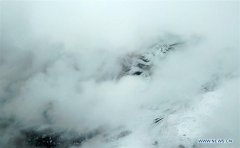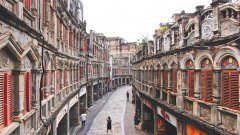Ancient artifact exhibition sheds light on Peru's mysterious Nazca culture
LIMA, June 21 (Xinhua) -- Rare 2,000-year-old relics from Peru's pre-Incan Nazca archaeological site went on show in the capital Lima for the first time on Wednesday.
Some 300 artifacts, from ceramic pieces to textiles and jewelry, as well as images of the mysterious Nazca Lines carved into Peru's southern Nazca Desert, are part of the exhibit at the Lima Art Museum (MALI).
The exhibit sheds some light on the life of the pre-Incan peoples who inhabited the desert region and their ceremonial center Cahuachi, which means "observatory," located 400 kilometers south of the nation's capital.
"After several years of research, we have compiled quite a lot of information about the lifestyle and organization of the people, and how they went about their different activities," said archaeologist Johnny Isla.
While the artifacts have gone on show abroad in Japan and Italy and other European countries, it is the first time they have been exhibited at home, he noted.
"This exhibit of Nazca culture is the first of its kind in Peru. That's why this event is important," said Isla.
The Nazca civilization utilized up to eight different ranges of color to create their fine ceramics, with a single piece often containing up to 15 different shades. They also produced woven textiles made of cotton and the fur of camelids.
Exhibit curator Cecilia Pardo said the artifacts and their 3D representations help illustrate how the Nazca peoples thrived despite the harsh environment.
"Through the objects we try to tell a story. We cover the topic of adaptation to the territory the Nazca lived in, a territory that was quite arid and wild desert, not as desertlike as it is today," said Pardo.
"The Nazca realized that while there was little water, and what there was ran below the surface, they could extract it using underground chambers called 'puquios' that used gravity to direct the water into 'cochas' (lagoons), where it was extracted to develop agriculture," said Pardo.
Research shows they developed a sophisticated irrigation system that made it possible to survive in the arid region, and today, Peruvian farmers still use 28 of these ancient aqueducts to water their fields.















